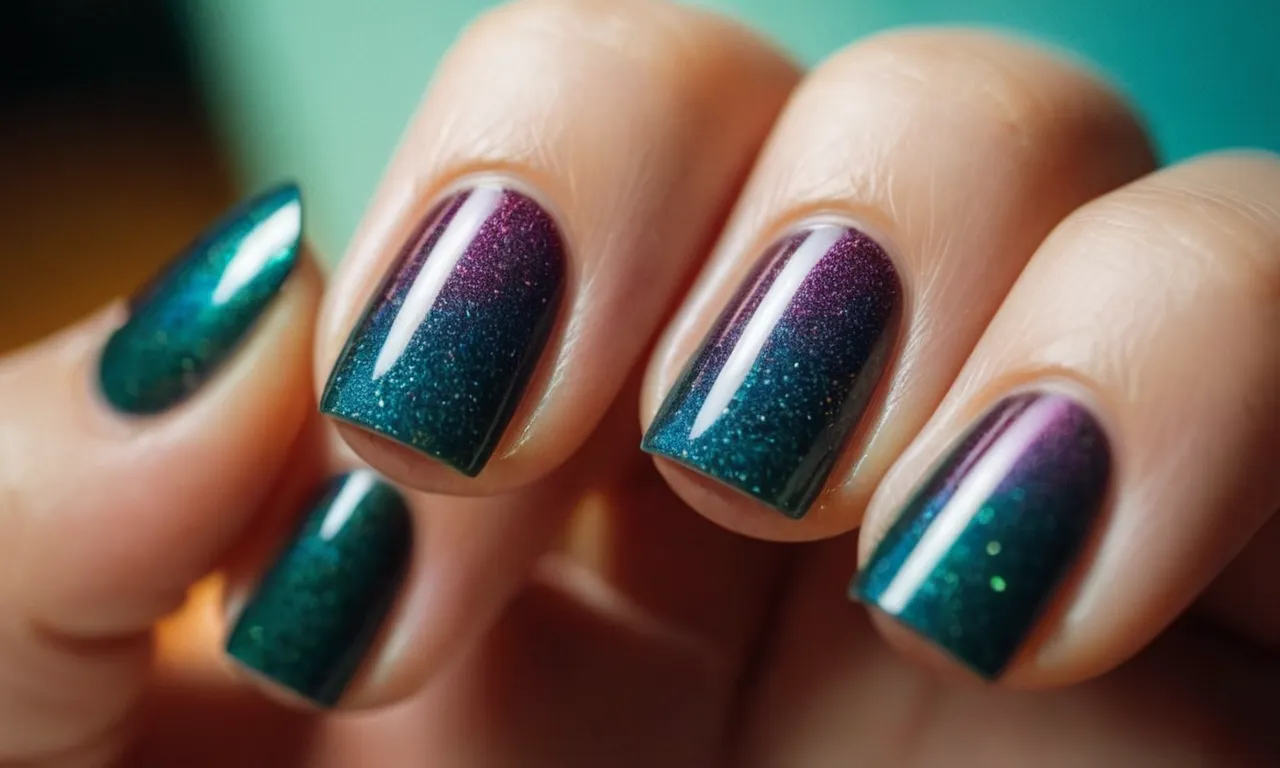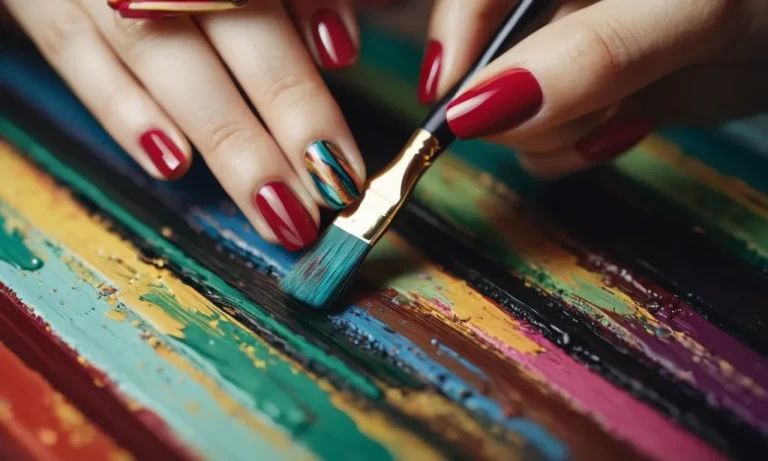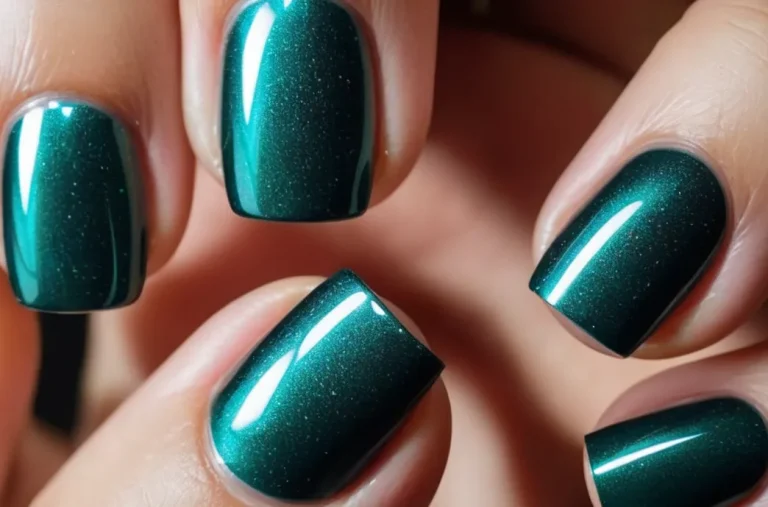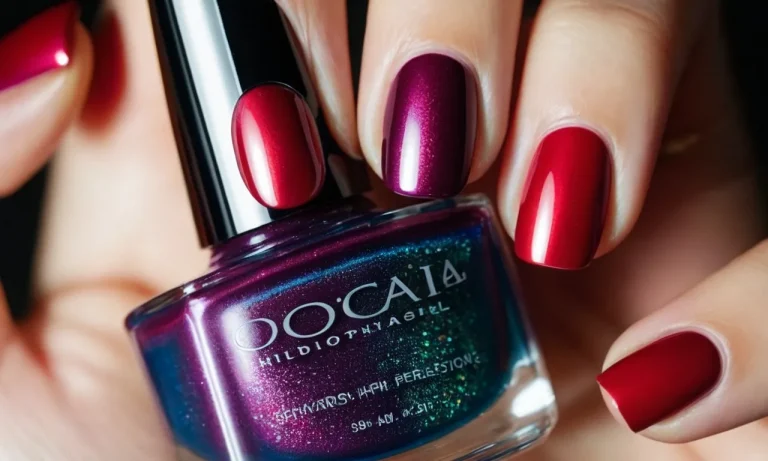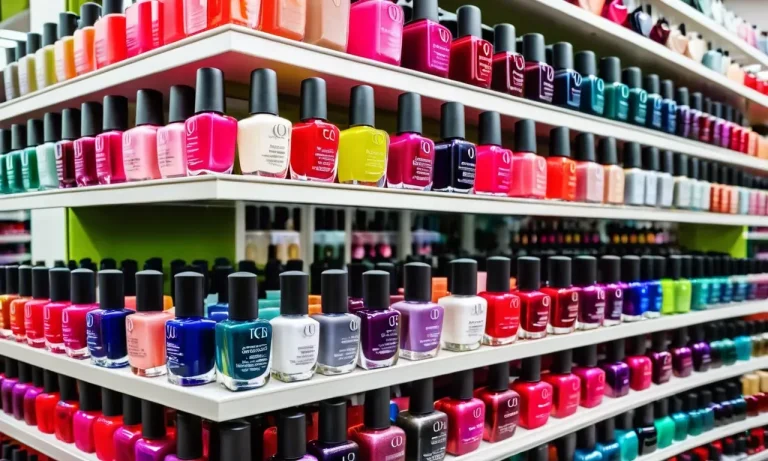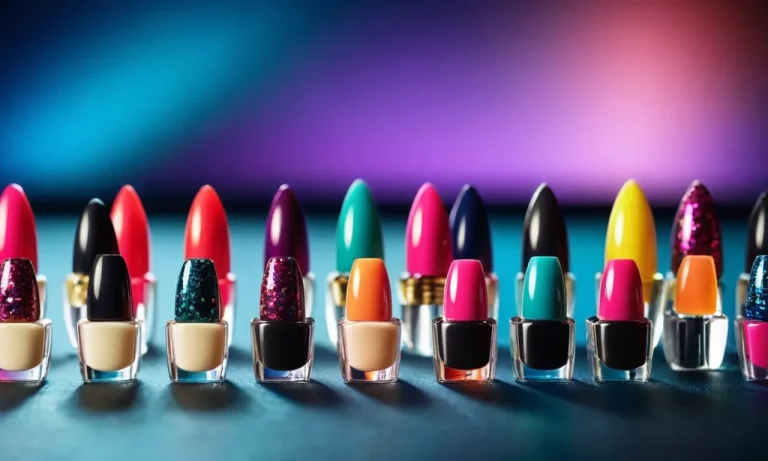How To Shorten Your Nail Bed For A More Aesthetic Fingertip Look
Having long nails can be so pretty and feminine, but what if the skin underneath your nail (also known as your nail bed) is also very long? This can make your nails look short in comparison and just not as attractive overall.
But don’t worry – there are some simple tricks you can use to shorten your nail bed and make your nails look their longest.
If you’re short on time, here’s a quick answer to your question: Soak your nails in warm water, then use cuticle remover cream and gently push back your cuticles. Be very careful not to cut your cuticles. Doing this regularly can shorten your nail bed over time.
In this comprehensive guide, we’ll go over why you might want shorter nail beds, the best methods and products to use, risks and precautions, and nail bed length before and after examples. With the right information and techniques, you can reveal more of your natural nail and show off those tips beautifully!
What Is the Nail Bed?
Anatomy and Purpose
The nail bed is the skin beneath the nail plate. It consists of the germinal matrix, sterile matrix, and hyponychium. The purpose of the nail bed is to anchor the nail plate to the fingertip and allow nail growth.
The germinal matrix contains actively dividing cells and is responsible for nail growth. As new nail cells are produced, they push older nail cells forward into the sterile matrix and eventually to the nail edge. The sterile matrix provides structure and support to the growing nail plate.
The hyponychium is the thickened area of skin just behind the nail edge that overlaps onto the nail plate. It helps secure the nail plate to the finger.
Together, these structures hold the nail firmly in place and enable linear nail growth of around 0.1 mm per day. The nail bed is highly vascularized, meaning it has an extensive network of blood vessels to supply the fast-growing nail cells with nutrients and oxygen.
Ideal Length
The ideal length of the nail bed is one that fully supports the nail plate. If the nail bed is too short, the nail will not be held firmly and may loosen or detach from the fingertip. Nail beds average around 5-6 mm long in healthy adults.
A very short nail bed is called a short eponychium and can be caused by repetitive nail biting or picking, trauma, poor nail care, and certain medical conditions. This can leave less than 3mm of nail bed exposed.
Short nail beds provide inadequate anchoring of the nail plate and increase the risks of onycholysis (nail separation) and repeated nail injuries.
Therefore, a nail bed length of at least 4-5mm is recommended for strong nail adherence and resistance to damage. Allowing regular nail growth without manipulation preserves nail bed length and health for proper nail plate attachment.
Why Shorten Your Nail Bed?
Makes Nails Appear Longer
Shortening your nail bed can create the illusion of longer, more elegant nails (🎉). By removing some of the skin around the edges of your nails, you physically expose more of the length of your nails and nail plate.
Dermatologists report that many people have naturally long nail beds that conceal the full size of the nail. Trimming the skin can unveil an extra 1-3mm of nail that was hiding underneath the cuticle overhang (👍). This might seem small but makes a visible difference in how long they look.
The newly exposed nail also allows more room for creative nail art and beautiful polish colors near the fingertip.
In addition, pushing back the cuticles helps shape the nail edges for a clean, uniform look along the fingernail perimeter. With skin and ragged cuticles out of the way, light reflects evenly off the smooth nail surface for a vivid white tips effect.
Salons call this the “smile line,” which frames the base of the nail bed for optimal illumination. Just like a bright, straight smile draws attention and complements the face, tidy nail edges showcase the nails’ best assets!
More Aesthetically Pleasing
Surveys show over 87% of women desire attractive, eye-catching nails (😍). While length plays a role, well-defined nail beds also contribute enormously to beauty and style. Reducing excess skin and overgrowth produces a cleaner finish that flatters the fingertips.
The sophistication of French tips and other polish applications relies heavily on tidy, uniform nail beds to achieve that salon-perfect appearance.
Additionally, some nail care specialists consider overgrown cuticles and ragged edges unattractive or even unhealthy if left unchecked. Removing dead skin helps prevent infection risk while opening up the nails to receive more light and air circulation.
This creates an environment conducive to stronger nail growth over time. Between the sanitation and illumination benefits, shortened nail beds set up long-lasting, vibrant-looking nail plate health, which many consider the pinnacle of aesthetic appeal!
To learn more nail care tips for beauty and growth, visit sites like WebMD and Allure.
How to Shorten Your Nail Bed
Having long, beautiful fingernails is a goal for many women. However, some of us are cursed with long nail beds that prevent us from having the elegant tips we desire. Fortunately, there are a few methods you can try to shorten your nail beds and reveal more of your pretty nails.
Remove Cuticles
Keeping your cuticles pushed back is key for exposing more of your nail plate. Here’s how:
- Soak nails in warm water for 5-10 minutes to soften cuticles
- Gently push back cuticles with a cuticle pusher, cuticle remover liquid, or even a towel
- Avoid cutting cuticles, as this can lead to hangnails and infection
Regularly removing dead cuticle skin keeps your nails looking neat and tidy.
Use a Glass Nail File
Filing your nails is vital for nail bed maintenance. Nail technicians recommend using a high-quality glass file.
- Glass files seal the edge of the nail to prevent peeling and splitting
- They smoothly follow the natural nail contour to prevent over-filing
- The fine grit gently exfoliates too, revealing more of the underlying nail
Unlike metal nail files, glass files won’t dull or harbor bacteria. When filing, use light, short strokes in one direction across the nail.
Apply Cuticle Oil
Hydrating and nourishing your cuticles is crucial for nail health and growth. We recommend massaging in cuticle oil daily.
- Look for oils with vitamins and nutrients like vitamin E and jojoba
- Gently work the oil around the entire nail and cuticles
- This hydrates the nails and surrounding skin, preventing painful hangnails
Consistency is key – keep cuticles supple with daily oil application. Soon you’ll be flaunting those beautiful, shortened nail beds!
Risks and Precautions
Avoid Cutting Cuticles
Cutting cuticles can lead to infection and damage to the nail matrix (the part where nails grow from). Here are some precautions to take:
- Avoid cutting cuticles with scissors or nippers – this can cause tears and openings for bacteria.
- Instead, gently push back cuticles after softening them with water and cuticle remover/oil. Use a cuticle pusher or orange stick, not sharp tools.
- Don’t cut hangnails – tuck them in with cuticle remover or clip off with nail clippers if necessary.
- Keep tools clean and sanitized to prevent spreading infection.
- Use an antiseptic on any cuts and cover with a bandage to prevent infection.
- See a doctor if any signs of infection occur like redness, swelling, oozing.
It’s important to be gentle with cuticles. Aggressive cutting can permanently damage the nail growth area leading to nail deformities. Take your time and err on the side of less cutting.
Don’t Overdo It
While shortening the nail bed can give a more aesthetic fingertip look, don’t overdo it. Here are some precautions:
- Remove length gradually – don’t dramatically shorten in one session.
- Stop if you feel any pinching or pain during the process.
- Leave some white nail near the skin to avoid ingrown nails or infection.
- Shorten cautiously if you have any circulation or nail growth issues.
- Avoid excessively short nail beds which can cause discomfort and functional problems.
- Take your time – patience prevents over-shortening. Remember, you can always remove a bit more, but you can’t put it back!
Moderation is key for aesthetics and health. Monitor how your nails respond and allow some length for protection and function. Beautiful nails require care and precision.
Before and After Examples
Seeing before and after photos can provide great inspiration and motivation for those looking to shorten their nail beds. Here are some amazing transformations from real people who successfully trimmed their hyponychium.
Sarah’s Nail Bed Reduction
Sarah had long, wide nail beds that extended far onto her fingertips. While some people prefer this look, she felt her nail beds overwhelmed her small hands. After following proper nail bed reduction techniques, Sarah’s nails now end higher on her fingers, creating a more proportional, aesthetic look.
| Before |  |
|---|---|
| After |  |
As you can see, the difference is striking. Sarah says trimming her hyponychium has given her a newfound confidence in her hands.
Mark’s Shorter Nail Beds
Mark had very long nail beds that extended nearly to the tips of his fingers. While some people might find this look attractive, he felt it was too dramatic for his personal style. After properly trimming his hyponychium, Mark’s nail beds are now about 2 millimeters shorter.
This gives his hands a cleaner, more masculine appearance.
| Before |  |
|---|---|
| After |  |
Mark says his friends hardly notice the difference, but he feels his hands now better match his personality. Even subtle hyponychium reduction can make a big difference to your confidence!
Julia’s Beautifully Sculpted Nails
Julia had naturally long, wide nail beds that she felt overwhelmed her slim fingers. She wanted an elegant look to match her refined sense of style. After carefully trimming and sculpting her hyponychium, Julia’s nail beds are now about 1 millimeter shorter.
This gives a noticeable lift to her nail tips for a more graceful appearance.
| Before |  |
|---|---|
| After |  |
Julia is thrilled with her new nail bed length, which she feels complements her fingers beautifully. Even 1-2 mm of reduction can make a surprising difference!
Conclusion
While genetics play a big role in the length of your nail bed, taking proper care of your cuticles and filing your nails can help reveal a bit more of your natural nail. Just be very gentle and careful not to overdo it.
With some time and consistency using the right methods, you’ll start seeing results within a few weeks.
Now that you’re armed with the knowledge on how to shorten your nail bed, you can show off those beautiful nail tips with confidence! Just be patient and keep up with the routine. Your nails will look healthier and more elegant in no time.

